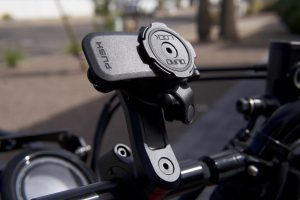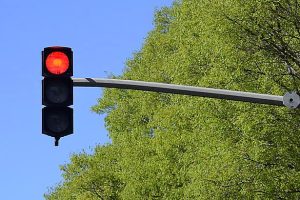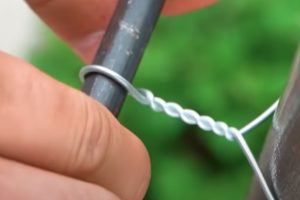Most of us have heard aboutSchwinn bicycles. Some of you may have even owned one. But did you know that at one time, Schwinn produced motorcycles? They did, and it turns out that motorcycles helped save Schwinn from extinction.
Background
The Schwinn bicycle company was founded in 1895 by Ignaz Schwinn and Adolph Arnold. Opening under the name Arnold, Schwinn & company, it was during the “safety bicycle” boom that the company first became successful. Unlike the awkward high wheelers and boneshakers of a similar time, the safety bikes were equipped with adequate brakes, chain drive, and were easier to ride and steer. Because riding a safety bike required no special skills, the new “mechanical horse” was the wave of the future.
和(Schwinn inventive company looking for bigger sales. Schwinn’s bicycle models for women helped to bolster the company’s bottom line for years. For example, the World Ladies Standard Model #34 came with no crossbar, a rear fender, and a chain guard. These features were said to prevent women’s skirts from getting caught in the wheel or chain.

Schwinn’s first bicycle made specifically for women. Image credit: Schwinn advertisement.
Falling bicycle sales
But from the 1900s to the 1930s, things began to change for the safety bicycle. Henry Ford’s automobile had people turning from pedal power to motorized power. The automobile was becoming the first chime in the death knell for bicycles. As more and more people adopted motorized four-wheel transportation, it seemed that the bicycle may have seen its final days.

Ignaz and Frank Schwinn. Photo credit: mmbhof.org
Schwinn’s motorcycles
Sales of bicycles to adults plummeted. Only bicycle sales to children were holding the industry together. And Schwinn knew his company was in trouble. So, Schwinn knew his company must diversify if it was to continue. Two-wheeled transportation would still be Schwinn’s forte’, but he would add a twist.
Schwinn purchases Excelsior
He bet his company on a new type of cycle – the motorcycle. Schwinn started to concentrate on powered two-wheelers, and in 1912, Schwinn took a big gamble and purchased Excelsior Motor Manufacturing and Supply company for $500,000.
从那时起,在(Schwinn的领导下,Excelsior motorcycles started to make their mark on the American landscape. Excelsior capitalized on performance and became the king of the hill in the era’s board track racing competitions. In the same year, an Excelsior motorcycle became the first motorcycle to be officially timed at a speed of 100 miles per hour.

An 1918 Excelsior model 18. Photo credit: yesterdays.nl
Then in 1915, Excelsior introduced a new model with the “Big Valve X.” It was a 61 cubic inch V-twin mated to a three-speed gearbox. In its advertisements, Excelsior says that it was the “fastest motorcycle ever.” Soon, sales of Excelsior motorcycles had Schwinn’s company back on its feet.

A 1929 Excelsior Super X. Photo credit: Yesterdays.nl
Schwinn purchases Henderson Motorcycles
But the boom was still not over. In 1917, Henderson Motorcycles offered to sell the company to Excelsior. Schwinn eventually accepted Henderson’s offer and transferred the production of the Henderson motorcycles to his Excelsior factory.
Side benefit
And there was another benefit to the transaction. Henderson also had a line of bicycles that could be integrated into the Schwinn portfolio. So with one purchase, he had propped up both his motorcycle and bicycle companies.
Later, in 1922, Excelsior-Henderson became the first motorcycle company to produce a motorcycle that could cover a mile in 60 seconds on a half-mile dirt track.
Excelsior-Henderson’s growth
It seemed that motorcycles had become the means to maintain Schwinn’s companies. Schwinn’s Excelsior-Henderson motorcycle company was so popular that it became America’s third-largest behind Harley-Davidson and Indian.
But unfortunately for Schwinn’s companies, the good times of the roaring 20s led to the Great Recession. The bubble burst for many, many companies, including those in the motorcycle industry. Schwinn was highly invested in Wall Street, and its plunge left him without adequate financial resources.

An Excelsior-Henderson board track racer. Photo credit: Pinterest
The end of Schwinn’s motorcycle business
Schwinn realized that his time in the motorcycle business had ended. First he tried to find a buyer for Excelsior-Henderson, but his search came up empty.
So in 1931, he called a meeting of his factory department heads. He turned to his senior staff and said, “Gentlemen, today we stop.” Schwinn had abandoned the motorcycle industry and, in a gutsy gamble, turned his company’s focus back to bicycles.
Ignaz Schwinn retires
At 70 years of age, Ignaz decided it was time for him to retire. He turned the company over to his son Frank who would actively manage the company. Frank took on the tough task of resurrecting what little remained of the bicycle business. Under Frank’s leadership, the company would eventually be re-named the Schwinn Bicycle Company.
Using his background in motorcycles, Frank set his sights on developing leading-edge bicycle products geared towards children. And for quite some time, he was successful. But ultimately, factory, labor issues, and foreign competition became the undoing of Schwinn bicycles. After numerous attempts to re-start the Schwinn Bicycle Company failed, the brand would never regain its previous dominance again. But it was motorcycles that kept the Schwinn name in two-wheeled transportation for more than 100 years.







